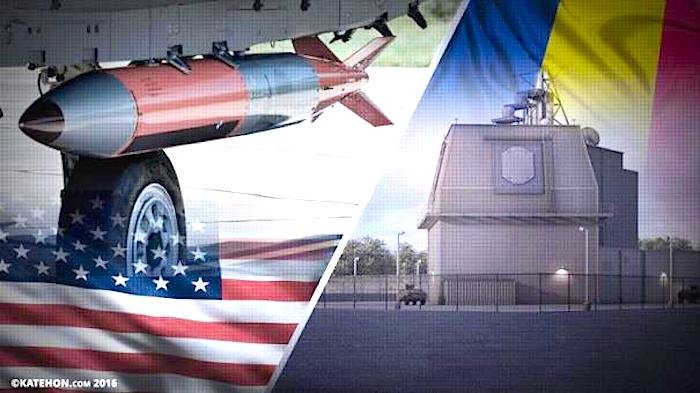Comment: On August 2, the U.S. Congressional Research Center issued a report for Congress that concluded "most experts agree that the weapons at Incirlik are not, at this time, vulnerable to theft or loss of control."
Stimson Center think tank warned that the United States was running the risk of losing control over some 50 US tactical nuclear weapons deployed at Turkey's Incirlik Air Base, just 70 miles from the Syrian border, to terrorists. The think tank stressed that a protracted civil conflict in Turkey would make the fate of the weapons uncertain, referencing the attempted coup in Turkey on July 15.
However, Washington did not see a need to move the nuclear weapons. "We do have nuclear weapons and those nuclear weapons are safe and secure, and we are very confident in that," so said US Air Force Secretary Deborah Lee James, reassuring that tensions between Washington and Ankara would not affect the nuclear bombs.
According to sources quoted by EurActiv.com, the Pentagon has initiated the transfer of 20 B61-type aviation bombs with nuclear warheads from the Turkish Incirlik air base to the Deveselu base in Romania currently hosting the US missile shield.
Comment: Arms are being transferred from Turkey's Incirlik air base to the Deveselu air base in Romania due to Washington's lack of trust in the Turkish authorities in the wake of the thwarted coup attempt in the country.
Although the Romanian Foreign Ministry has denied this news, it is nonetheless largely credible. [---]
Comment: The Romanian Foreign Ministry has rejected media reports that the United States was moving nuclear weapons from a base in Turkey to one in Romania. The ministry's August 18 statement said it "firmly dismisses the information."
How can Romania use these nukes?
Comment: Short answer to the question: They can't.
The B61-11 nuclear bomb cannot be used by MiG-21 Lancers or any variant of the "secondhand" F-15's acquired by Romania from Portugal. Hypothetically, in the case of Russian aggression against Romania, if the Russians do not immediately destroy the B61-11 bombs and the installation at Deveselu, then only the US' F-15, F-16, and F/A-18's deployed in Romania can handle it. What is more, these US planes would only be able to arrive in Romania after a large portion of Romanian territory would already be occupied by the Russian Army, and American planes would be obliged to strike Russian military objects in Romania with the B61-11 nuclear bombs. In turn, the Russians would respond with nuclear strikes against bases in Romania hosting the operations of US planes. Romania's population would suffer from the effects of nuclear bombs launched by both sides.
Can B61-11 warheads be used to attack Moscow from Deveselu?
Three years ago, the Pentagon initiated a modernization program for the retention of 400 B-61 bombs more than 30 years old out of the 13,000 operational total. The modernization program, entailed their transformation into new B-61 M12's equipped with guidance systems and the likely possibility of adapting W85 nuclear warheads to be used by cruise missiles. Approximately 180 bombs from US air forces' B-61 deposits in Europe were upgraded and returned back to the European continent. [...] 108 American Pershing II missiles together with 464 American cruise missiles with BGM-109G nuclear warheads, all ground-based, were stationed in Europe (Belgium, Netherlands, Germany, and Italy).
The ground-based BGM-109G cruise missile is a variation of the Tomahawk naval cruise missile (with a 1400-2500 km range) that can be launched from Mk 41 VLS installations placed at Deveselu. The BGM-109G has been fitted with a W84 nuclear warhead derived from the W85 of the B-61, which has the same diameter and about the same length. The W85 from the B-61 can be easily adapted to be mounted on a Tomahawk cruise missile that could be launched from Deveselu. Twenty-eight years after the signing of the INF Treaty, the Americans reintroduced Tomahawk BGM-109G's to Europe under the guise of the so-called antiballistic shield capable of hitting targets in Moscow and other parts of European Russia.
For their own protection from Russian forces, Mk 41 VLS facilities in Deveselu do not need outdated Romanian aviation and surface-to-air missiles, since such missiles as the RIM-66 Standard (range - 167 km), RIM-67 standard (range - 185 km), RIM-174 Standard ERAM (range - 340 km) and RIM-162 ESSM (range - 185 km) can be launched.




nuclear bombs in Romania with a new missile delivery system ...what could go wrong with that NATO..."NOT ALL THERE OBVERSELY